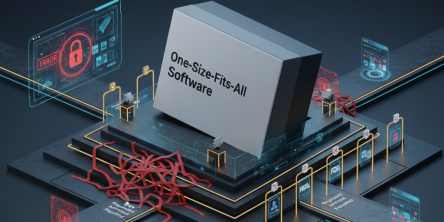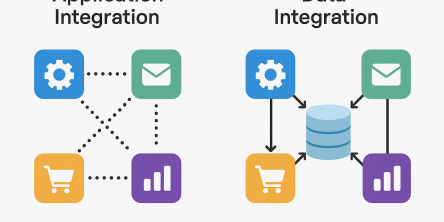How Cloud-Based Taxi Dispatch Software is Transforming The Transportation future

For a person who works in the transportation industry for more than 15 years, I have experienced this shift through technology. I’ve witnessed how technology has altered the way we move people. It has been a tremendous transformation, from radio calls, to mobile apps but nothing has had a greater impact on our operations as the shift to cloud based Taxi dispatch system software.
I was a fleet manager of a midsized fleet of approximately 60 vehicles three years ago in Chicago. We were facing the old school way of dispatch – manual entries, stagnant spreadsheets, lagging response times, and no ability to real-time track things. It wasn’t sustainable. Our solution needed to be smarter, be scalable, and be able to compete with app-based ride-sharing giants. That is when we started going through the investigation of cloud-based taxi cab dispatch software and it changed everything.
Why Cloud-Based Taxi Dispatch Software?
We had flexibility as the key selling point. Rather than on-premise systems which necessitated costly servers and upkeep of IT, cloud-based platforms had quick deployment and round-the-clock access from anywhere in the world. This was a changer especially to our mobile dispatchers and drivers who were ever on the move.
Surprisingly, for the first week on the job we observed a 25% increase in ride assignments and a significant decrease of the idle time. Jobs could be automatically allocated to drivers depending on proximity, traffic conditions, and availability of drivers – something that used to give us a hard time if we did assignments by ourselves.
Real-Time Tracking & Data-Driven Decisions
The biggest difference that we observed was in the area of operational efficiency. With real-time GPS tracking, we would be able to track location of all the vehicles and easily reroute them if required. This enabled us to efficiently reallocate rides during peak hours or whenever there was sudden traffic jam and maintain our customers happy.
Moreover, the analytics dashboard of the software provided us with insights, we never had ever before: which drivers were most efficient, peak demand times, average trip lengths, and what the rates of customer satisfaction were. With that data, we were able to adjust our shift schedules, improve route planning, and even reduce fuel costs by 18% in the first quarter alone.
Integration with Mobile Apps
Another aspect that impressed us was how easily the taxi dispatch system software integrated with customer-facing apps. Riders could now book a cab, track its arrival in real-time, rate their drivers, and even make payments—all through one interface. It elevated our service quality and brought us closer to offering an experience similar to the Ubers and Lyfts of the world.
One feature that stood out was the in-app panic button and emergency alerts for passengers and drivers—something that really appealed to our corporate clients who prioritized safety.
Better Communication and Driver Satisfaction
Before we implemented taxi cab dispatch software, drivers had to rely on sporadic radio communications, which often led to missed pickups or delays. The new system had built-in messaging that let dispatchers communicate directly with drivers, send updates, or alert them of route changes instantly.
Drivers appreciated the transparency, especially when it came to fare calculations, incentives, and performance tracking. As a result, driver turnover dropped by 40%, and morale saw a much-needed boost.
The Road Ahead: A More Connected, Autonomous Future
As I look ahead, I’m convinced that cloud-based taxi dispatch system software is not just a tool—it’s the foundation for the future of urban transportation. The integration with AI and machine learning is already underway. Some systems can now predict demand surges and dynamically adjust pricing or dispatch patterns in real time.
There’s also talk of integrating autonomous vehicles into these platforms. While that might seem far off, the infrastructure being built today—on cloud systems—is what will make that future possible. Cities like San Francisco and New York are already piloting such initiatives, and companies that invest now are bound to have a competitive edge.
Final Thoughts
If there’s one takeaway from my experience, it’s this: don’t wait to modernize. The longer you cling to outdated systems, the more you risk falling behind. Cloud-based taxi cab dispatch software offers scalability, transparency, and automation—everything you need to thrive in an industry that’s moving faster than ever.
Whether you're managing a 20-car fleet or a city-wide taxi service, embracing this technology will not only improve your bottom line but also future-proof your operations.
Similar Articles
At first glance, off-the-shelf software appears to be a dream come true. They are quick to set up, cheaper upfront, and marketed as “universal.”
A modern business must continually adapt. This bit everyone seems to know.
The modern healthcare industry is undergoing a significant transformation. The models of healthcare that we are used to thus far are now making way for a more data driven approach
In the modern world, maintaining good health often feels like a constant challenge. Between busy lifestyles, sedentary habits, and lack of motivation, many people find it difficult to stay consistent with exercise, diet, or wellness practices.
Every news publisher's dream, or just getting started, hits that wall sooner or later. What do you build your site on? You’ve basically got two roads: WordPress or custom development.
Discover key features construction teams need in permit tracking software to boost efficiency, stay compliant, and streamline project management.
Thanks to cloud computing, specialized SaaS apps have become rather accessible.
Let’s be honest – managing royalties isn’t exactly the fun part of working in media or publishing, but it is very important because it protects the creator’s rights and work ownership.
The Software as a Service (SaaS) industry continues to transform before 2025 which creates new obstacles for business operations.








